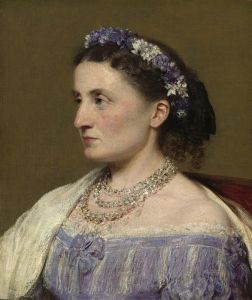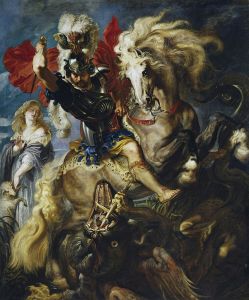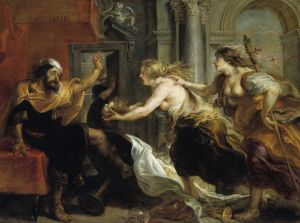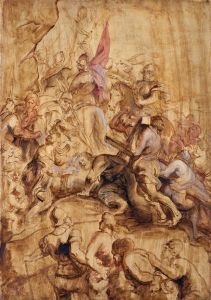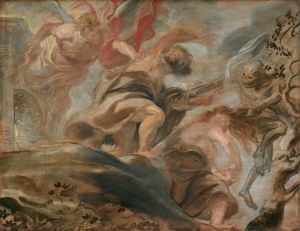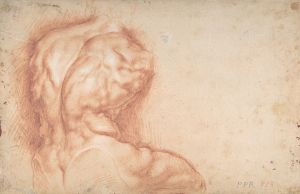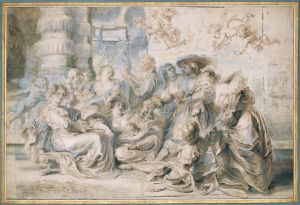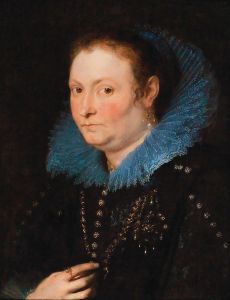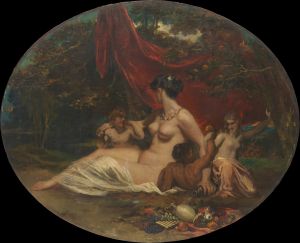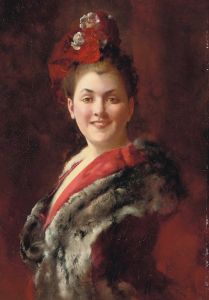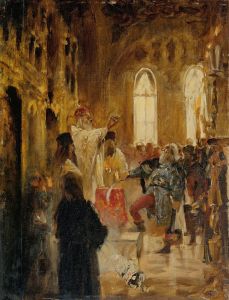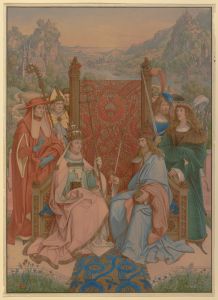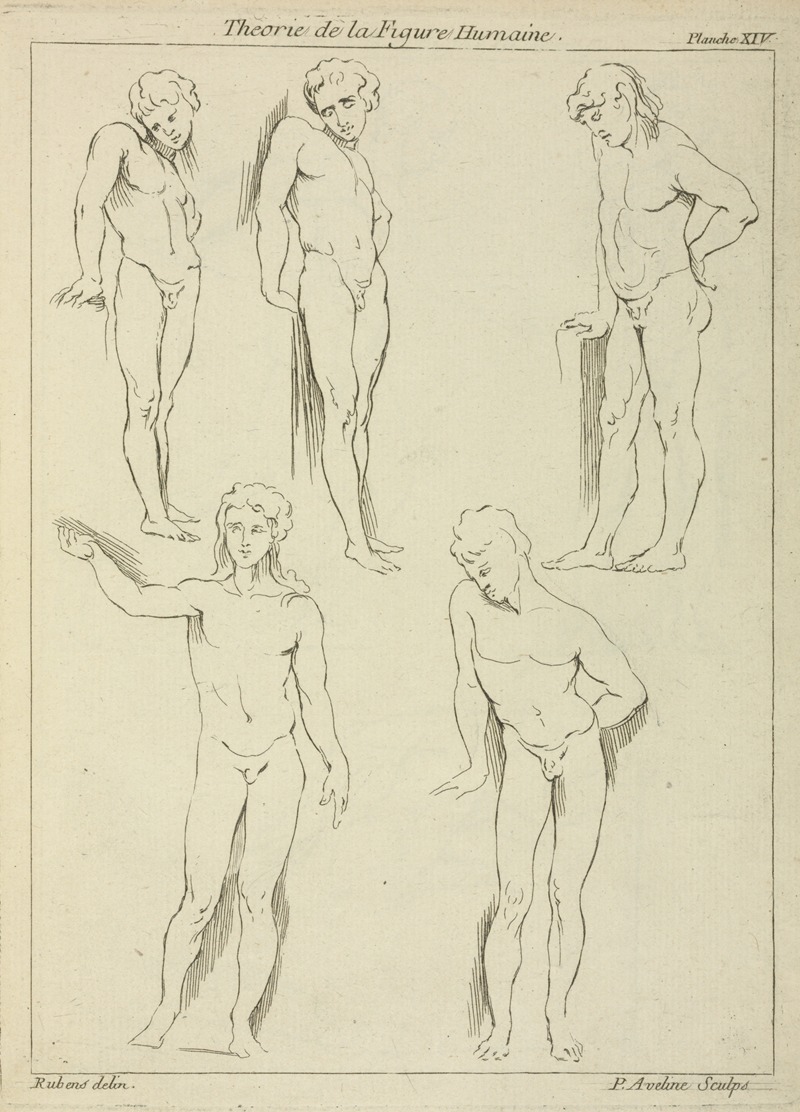
Five male figures
A hand-painted replica of Peter Paul Rubens’s masterpiece Five male figures, meticulously crafted by professional artists to capture the true essence of the original. Each piece is created with museum-quality canvas and rare mineral pigments, carefully painted by experienced artists with delicate brushstrokes and rich, layered colors to perfectly recreate the texture of the original artwork. Unlike machine-printed reproductions, this hand-painted version brings the painting to life, infused with the artist’s emotions and skill in every stroke. Whether for personal collection or home decoration, it instantly elevates the artistic atmosphere of any space.
Peter Paul Rubens, a prolific 17th-century Flemish Baroque painter, is renowned for his dynamic compositions, vibrant color palette, and masterful depiction of the human form. However, there is no widely recognized painting titled "Five Male Figures" attributed to Rubens. It is possible that the title refers to a study or drawing rather than a finished painting, as Rubens often created numerous preparatory sketches and studies for his larger works. These studies were integral to his creative process, allowing him to explore composition, anatomy, and the interplay of figures before committing to a final piece.
Rubens' oeuvre includes a vast array of subjects, from religious and mythological scenes to portraits and landscapes. His works are characterized by their energetic movement, dramatic use of light and shadow, and robust, fleshy figures. Rubens was deeply influenced by the Italian Renaissance, particularly the works of Michelangelo, Raphael, and Titian, which he studied during his time in Italy. This influence is evident in his adept handling of the human form and his ability to convey emotion and narrative through his compositions.
In Rubens' studies and sketches, one can observe his meticulous attention to detail and his understanding of human anatomy. These preparatory works often feature multiple figures, capturing various poses and expressions. They serve as a testament to Rubens' skill as a draftsman and his dedication to perfecting his compositions before executing them on a larger scale.
If "Five Male Figures" is indeed a study by Rubens, it would likely exemplify his approach to capturing the dynamism and vitality of the human body. Such studies were typically executed in chalk, ink, or oil on paper, allowing Rubens to experiment with different arrangements and interactions between figures. These works were not always intended for public display but were crucial tools in the development of his larger, more complex paintings.
Rubens' legacy is vast, and his influence extends far beyond his own time. His works are housed in major museums around the world, including the Louvre in Paris, the Prado in Madrid, and the National Gallery in London. His contributions to the Baroque movement and his impact on subsequent generations of artists are widely recognized, cementing his status as one of the most important painters in Western art history.
In summary, while there is no specific information available on a painting titled "Five Male Figures" by Peter Paul Rubens, it is plausible that it refers to a study or sketch, reflecting his process of exploring human anatomy and composition. Rubens' body of work continues to be celebrated for its vitality, emotional depth, and technical mastery.






